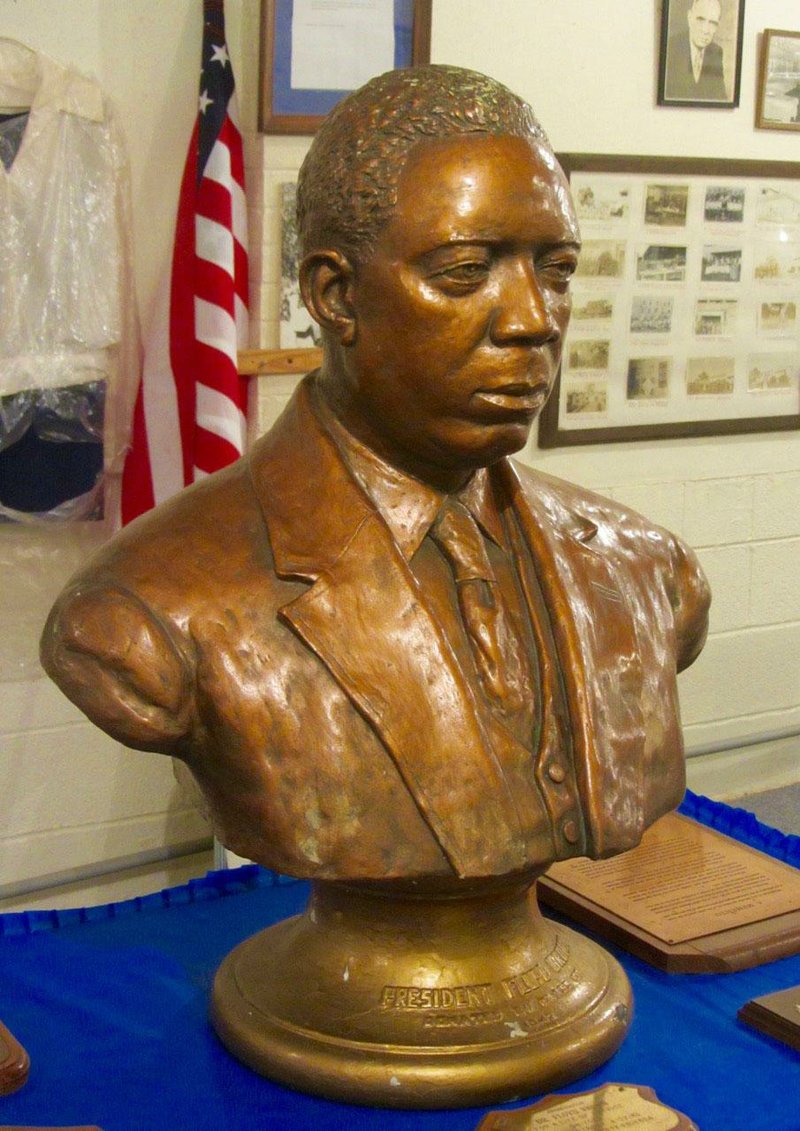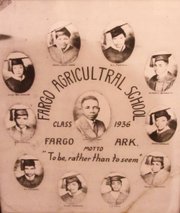FARGO — In the depths of the Jim Crow era, which spanned most of a century in former Confederate states such as Arkansas, black youngsters faced long odds to get a decent education.
A visionary black educator named Floyd Brown stepped into this void in 1919 by establishing Fargo Agricultural School in this hamlet just north of Brinkley. His steadfast work is celebrated here at the Fargo Agricultural School Museum.
According to the museum’s brochure, Fargo students “were offered an outstanding academic and vocational curriculum at a time when little public education was available to African Americans in Arkansas. The cost was $15 a month for room, board and tuition, but no one was turned away for lack of payment.”
A native of Mississippi, Brown had attended Tuskegee Institute and studied there under the legendary Booker T. Washington. Coming to Brinkley with $2.85 in his pocket, Brown somehow financed the purchase of the 20-acre campus. He persuaded backers in the local black community to donate the labor and supplies for building classrooms, dormitories and barns.
Brown, as the brochure reports, modeled the school on Tuskegee Institute. He “motivated young people to study, to work and to improve themselves.” He “created a school that impressed students with the dignity of agriculture, the value of community service and hard work, and an essential faith in God and family.”
Some of the museum’s most captivating exhibits are photographs of graduating students in their caps and gowns. Eleven graduates, seven boys and four girls, are pictured from the 1936 class, whose motto was, “To be, rather than to seem.” Brown and his wife are portrayed in the 1939 class photo along with 16 graduates. The listed motto is a hopeful one: “The best is yet to come.”
Fargo students had to be industrious, as the brochure points out: Boys “worked on the school farm, producing 90 percent of the food consumed at the school. They also constructed the campus buildings in which they lived ….”
As for girls, they “learned home-economics crafts such as needlepoint, sewing and food preservation that were essential for rural families at the time.” On display is a treadle sewing machine from the 1930s, before electricity came to much of rural Arkansas. There are also tools and cooking utensils from the school’s early years.
At its peak in the 1940s, Fargo had nearly 200 students. They also learned the worth of community service, as the brochure explains: “They replaced dirt roads with new gravel surfaces and strung electrical and telephone wires to neighboring communities.”
Ailing by 1949, Brown sold the school to the state, which turned it into the Fargo Negro Girls Training School. The facility closed after racial integration in schooling became the law of the land.
Brown died in 1961, the year after alumni had arranged the opening of the museum, now on the grounds of the Arkansas Land and Farm Development Corporation.
As the brochure points out, “In a time when rural black families had few options for advancement, Floyd Brown taught people to care for themselves and for others. He changed the lives of hundreds of people with the basic philosophy that ‘Work Will Win.’”
Fargo Agricultural School Museum is open 9 a.m.-5 p.m. Monday-Friday. Admission is free. From Little Rock, take Interstate 40 w̶e̶s̶t̶ east* to exit 216 at Brinkley. Drive north for three miles on U.S. 49 and turn right in Fargo at the museum sign onto Floyd Brown Drive. Call (501) 734-4040.
*CORRECTION: To reach the Fargo Agricultural School Museum from Little Rock, take Interstate 40 east to exit 216 at Brinkley. This column included incorrect directions.

